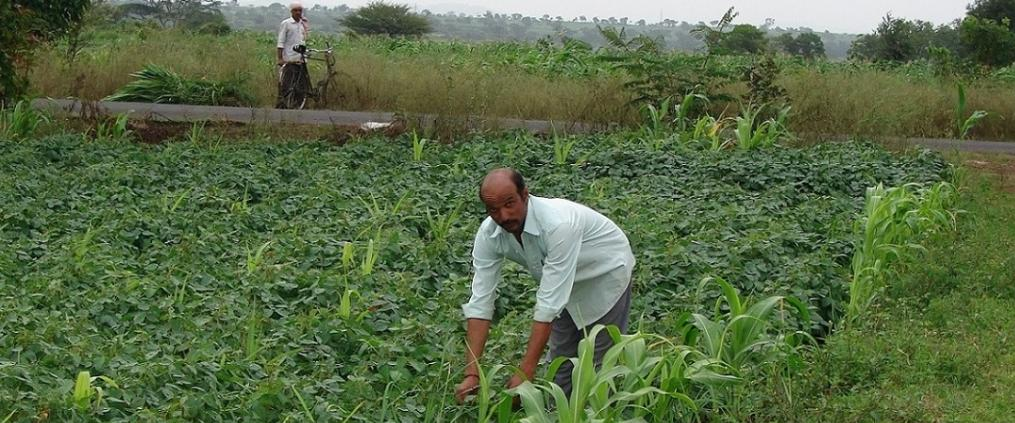
It is very important to understand the dynamics behind production of agricultural commodities, in addition to economics and marketing. These aspects will be used regularly in relating with fundamental analysis of agricultural commodities. Therefore understanding these aspects will make the fundamental analysis activity quite relevant in near future.
PRODUCTION:
Production of Agriculture crops requires many skills including biology, agronomy, mechanics, and marketing, apart from covering a variety of operations throughout the year. As known to the majority, agriculture in India is a major economic sector and it also creates plenty of employment opportunities. Speaking in terms of agricultural production, India holds the second position all over the world. In 2020, around 41.49 percent of the workforce in India was employed in agriculture. India’s agriculture is the biggest industry in India presently and on the whole, it has a key role in the socioeconomic growth of the country.
The following states in India are the most developed states in terms of agricultural supply contribution:
-
Punjab
-
Uttar Pradesh
-
Rajasthan
-
Gujarat
-
Madhya Pradesh
-
Haryana
-
Bihar
-
Andhra Pradesh
-
Maharashtra
-
West Bengal
India ranks first in producing the outputs given below:
-
Jute
-
Most Spices
-
Pulses like Pigeon Peas/Chickpeas
-
Castor seed
India holds the third rank in the world in the production of the following:
-
Sorghum
-
Rapeseed
India ranks as the second biggest producer of the following:
-
Cardamom
-
Wheat
-
Sugarcane
-
Lentil
-
Potatoes
The Government of India has been emphasizing on various plans and strategies so as to increase investment or outlay in merchandizing and commercializing. Some of the well known plans and strategies of the Indian Government shall include:
-
Market Research and Information Network
-
Construction of Rural Godowns
-
Grading and Standardization
-
Development/Strengthening of Agricultural Marketing Infrastructure
The principal authority in farming and ancillary industries, which comprise learning and research, is the Indian Council of Agricultural Research, or ICAR.
The Indian Agricultural Research Institute (IARI) was set up in the year 1905 and it plays a key role in the studies and explorations that resulted in the Green Revolution in the decade of the 1970s. On the other hand, formulating new methods for the planning of agricultural testing is done by the Indian Agricultural Statistics Research Institute. The institute also evaluates information associated with cultivation and offers expert advices in statistical methods for livestock and tree raising.
TRANSPORTATION:
Efficient agricultural marketing needs adequate transport system because if transport services are not provided frequently, or they are expensive or of poor quality then farmers will have a great difficulty during the sale of their crop. If services are expensive then a farmer will fetch lower farm gate prices through sale of their crop/crops. Likewise, slow or infrequent transport services or blocked roads will be detrimental for those crops which lose their quality over time very quickly like fresh vegetables, tea, milk etc. Similar situation will be seen with poor storage facilities.
If crops like mango and banana are marketed through bad or rough roads then this will be a disadvantage for farmers because price offered will be lower (because of bruising etc). Demand for the agricultural products are quite robust from domestic and overseas trading centres hence there is always a need to create an efficient, high volume, transport and marketing system, where the transporting and marketing unit costs are optimized.
If the difference between what the farmer receives after selling his produce and what the consumer pays for his produce is significant then the grower or farmer gets motivated for producing his crop year after year. The scope for agricultural exports in a developing country will be lower as against more efficient countries in case the internal transport costs in that country are particularly high then. The nature of transport services strongly influences the pattern of agricultural marketing, and there lies a challenge in many developing countries which are suffering from monopolistic, low volume and high cost transport and marketing systems. Both transport and marketing operations often experience economies of scale.
ECONOMICS AND MARKETING OF AGRICULTURAL COMMODITIES:
For promoting development in agriculture marketing system there is a need of efficient and competitive marketing system so that the produce gets the advantages of adequate rural transport services as well as infrastructure. Demand for transport can be increased by presence of markets in themselves. Goods and people are available in a transport market which influences demand for the same. When populations are dispersed it is more likely that the markets are also dispersed with long average distances to market and people less likely to make the trip.
Large distance from production point to marketing points makes a marketing system ineffective. Additionally, direct selling to final consumers can be one of the most effective ways for farmers to receive best price for their produce or crops. Most agricultural markets are influenced by the marketing cartels therefore growers bringing their own produce to market can be an advantage as it will help in undermining these cartels malpractices. It should be noted that for growers to sell their own produce without being harassed in the marketing process, there should be adequate facilities in mandis or relevant markets, with minimum cost incurred. In case costs are higher, then the wholesalers, traders, large private marketing companies all reduce the farmers bargaining power, which in turn, creates a negative impact over demand for transport services, as well as the supply of vehicles, available for the people based in the rural areas.












